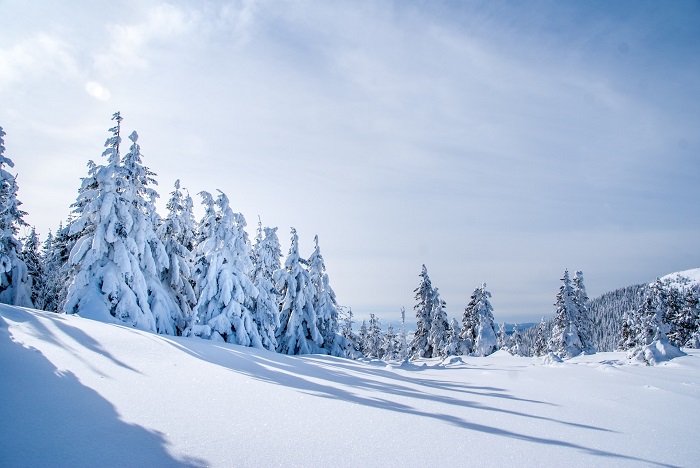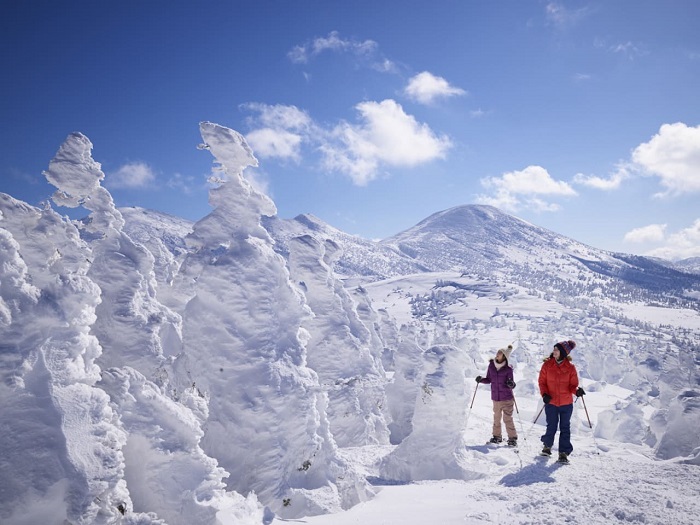ISABEL RUBIO ARROYO | Tungsteno
The Japanese city of Aomori is one of the snowiest places on earth, receiving an average of almost eight metres of snow a year, and removing it requires a lot of resources and millions of dollars in investment.
A team of researchers from the information technology startup Forte Co. and the University of Electro-Communications in Tokyo is proposing another solution: trying to harness it to generate clean and affordable electricity.
We analyse the potential and limitations of this method to provide the Japanese city with a new renewable energy source.
A snow-filled pool to generate power
Researchers have dumped snow into a swimming pool located at an abandoned elementary school. Their aim is to spend a few months testing the feasibility of producing energy from the temperature difference between the stored snow and the surrounding air, according to The Japan Times. To do this, they will use heat pipes to supply cold air (from the stored snow) and warm air (from outside) to the coolant inside the turbine. The temperature difference between the two will create a convection current in the coolant, causing the turbine to spin and generate electricity.
"The greater the temperature differences, the greater the efficiency of power generation," Koji Enoki, an associate professor at the University of Electrocommunications and developer of the system, told the Nikkei Asia newspaper. The researchers estimate that the process could produce electricity as efficiently as solar power and at a lower cost. They also suggest it could have less environmental impact than wind farms or photovoltaic panels. The melted snow, they say, can be disposed of like regular wastewater.
Aomori, a city 715 kilometres north of Tokyo, is the ideal setting for such tests, as it spends tens of millions of dollars each year clearing snow from roads, according to Nikkei Asia. In fact, last year there was so much snow in the city that local authorities had to spend around $46 million just to remove it from buildings and roads, according to Interesting Engineering. While the snow is normally dumped into the ocean, it could be harnessed to generate energy if this method proves feasible.
A team of researchers wants to harness snowfall in Aomori to produce electricity. Credit: WION
The challenges of generating electricity from snow
Forte Co. president Jun Kasai came up with the idea of using snow to generate electricity after hearing about a European startup that used sand to produce electricity. This is not the first time that scientists have tried to generate electricity from snow. However, the proposed methods have not been scalable and have had some limitations.
A team of researchers at the University of California, Los Angeles (UCLA) developed a device to produce electricity from falling snow. Richard Kaner, the lead author of the study published in 2019 that detailed the device, noted that it could "work in remote areas because it provides its own power and does not need batteries." One of the drawbacks was that it could only power small devices.
It is important to note that producing energy from snow poses numerous challenges. For the process to be scalable, large snow storage facilities are needed. Ensuring a continuous supply of warm air in snowy regions can also be complicated for the companies operating the power plants.

Scientists are trying to generate electricity from snow. Credit: Unsplash
It remains to be seen whether the Japanese researchers will be able to overcome these challenges and make the method scalable. Kasai is optimistic that this new system could be useful to European countries facing an energy crisis as a result of the war in Ukraine. "I seek to provide snow power generation to colder regions in Europe and elsewhere as a low-cost renewable power generation method with affordable costs of implementation," he says. One of his goals is a very ambitious one: to alleviate winter energy supply problems.
· — —
Tungsteno is a journalism laboratory to scan the essence of innovation.
